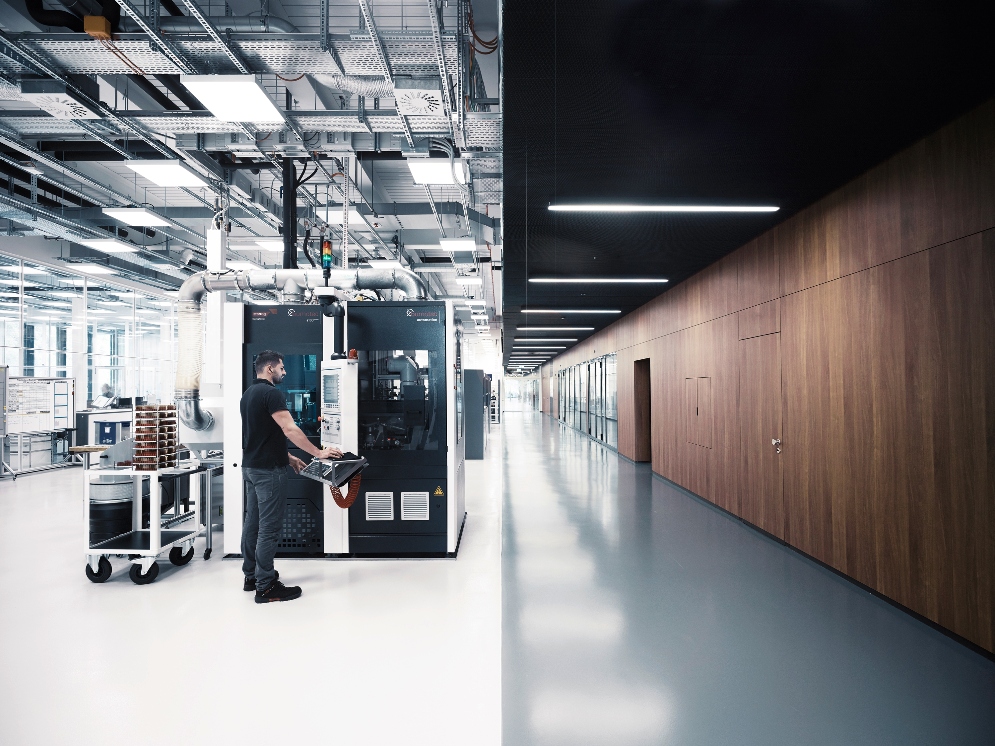
As most readers will know, the bulk of Swiss watchmaking happens in the French-speaking part of the country. Those less familiar with Switzerland than Swiss-made timepieces might even think the whole place is French-speaking, or at least the majority. Such is the dominance of the Romandy that the casual watch lover might think Schaffhausen is a town in Germany. It most assuredly is not, and IWC is as Swiss as they come. Since the manufacture is quite a ways off the beaten path, plenty of watch journalists actually miss out on visiting – getting here from Geneva is more challenging than getting to the La Chaux-de-Fonds, for example. Thus, when asked if we wanted to visit in the middle of summer, we jumped at the chance.
By we, I mean Ruckdee Chotjinda and I, along with our IWC watches. This was actually only the second time I could bring a watch I bought back home for a visit. It so happens that Ruckdee also brought his own IWC, the Portugieser Perpetual Calendar in red gold. Regular readers might realise that this is the trip that we spoke with IWC Manufacture Director Walter Volpers, since I made a point of citing the moment he recognised our watches when we spoke.
Traditionally, manufacture buildings evolved over time, sprawling beyond the confines of whatever space they began in. We will demonstrate this in other stories this issue, and if you are reading in order, you have already seen some. IWC Schaffhausen, which we will simply call IWC to make it simpler to distinguish between the brand and the town, has been in the old town for a little while now. This is where the brand maintains offices, including for the communications team, and also CEO Christoph Herr-Granger, and a nifty little museum. It is also where a pivotal scene in this story will take place, starring Ruckdee’s watch. You will have to wait till the end for that because we have quite some ground to cover, as a Swiss German-speaking person might put it, in English.
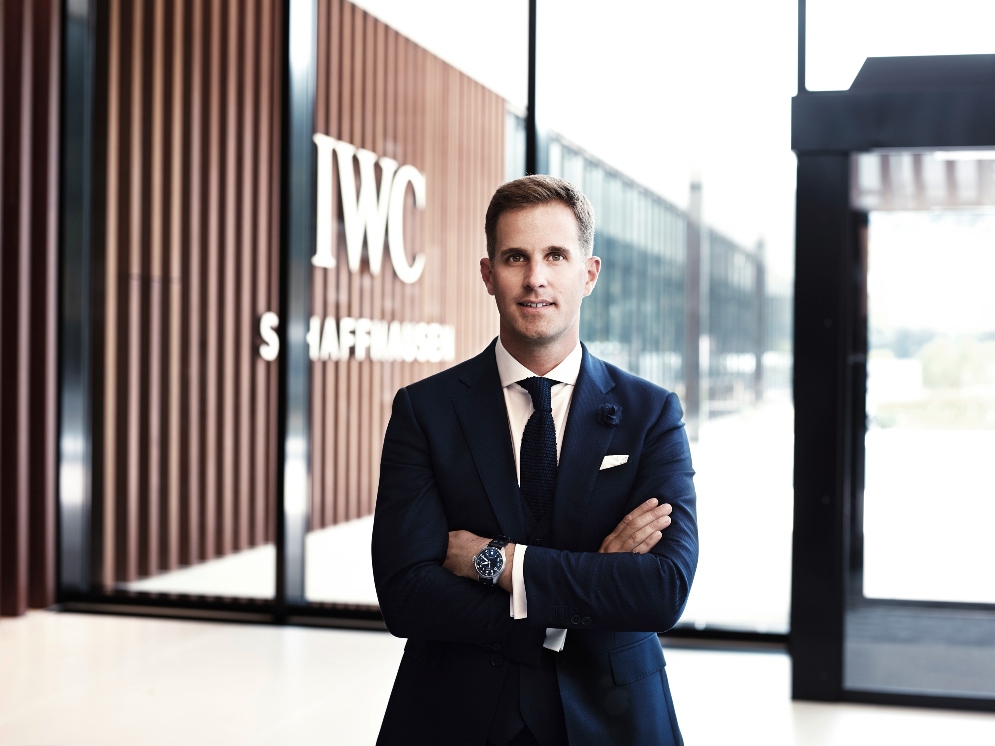
Imposing Presence
The new facility that we visited opened at an auspicious time, in 2018, in the sense that it was the 150th anniversary of the brand. It gives IWC options in terms of how it decides to handle the production challenges of the present and future, just as founder Florentine Ariosto Jones was looking to do back in the day. The manufakturzentrum also happens to be an excellent workplace to visit, without much of the upstairs-then- downstairs-just-to-go-up-different-stairs hikes that are typical of many Swiss manufacturers. For a sense of that old reality, the existing office in town is exactly like that. The thoroughly new building has some 13,500 sqm of space, which is amply hinted at in the expansive entry area with its meters high ceiling, arranged on two levels (one above ground as shown and one below).
Everything is welcoming and warm; everything is also easy to follow, with a path laid out for where you can walk. In the images here, the grey area is where visitors walk, while the white areas are where the technicians, engineers, watchmakers and craftspeople ply their trade. This is a nice way to see everything and not feel guilty about invading people’s workspaces. The flip side of this is that you will not be able to peer over someone’s shoulder as he or she affixes a hairspring to a balance wheel. But we are getting ahead of ourselves here.
As it happens, we began with CNC machines, which is only natural because this is how all components are manufactured. A brand that makes a watch collection called Ingenieur has to make certain it projects a certain professionalism and we think you will agree that IWC has succeeded here, just from the pictures. Again, the downside is that the sense of homey craftsmanship is missing – production lines are production lines after all. As the editor of Robb Report Singapore notes in one of his manufacture visit stories, the smell of oils yet manages to fill the air of contemporary manufacturers, and the manufakturzentrum is no exception, spic and span as it is. In other words, the industrial vibe has a certain appeal to it.
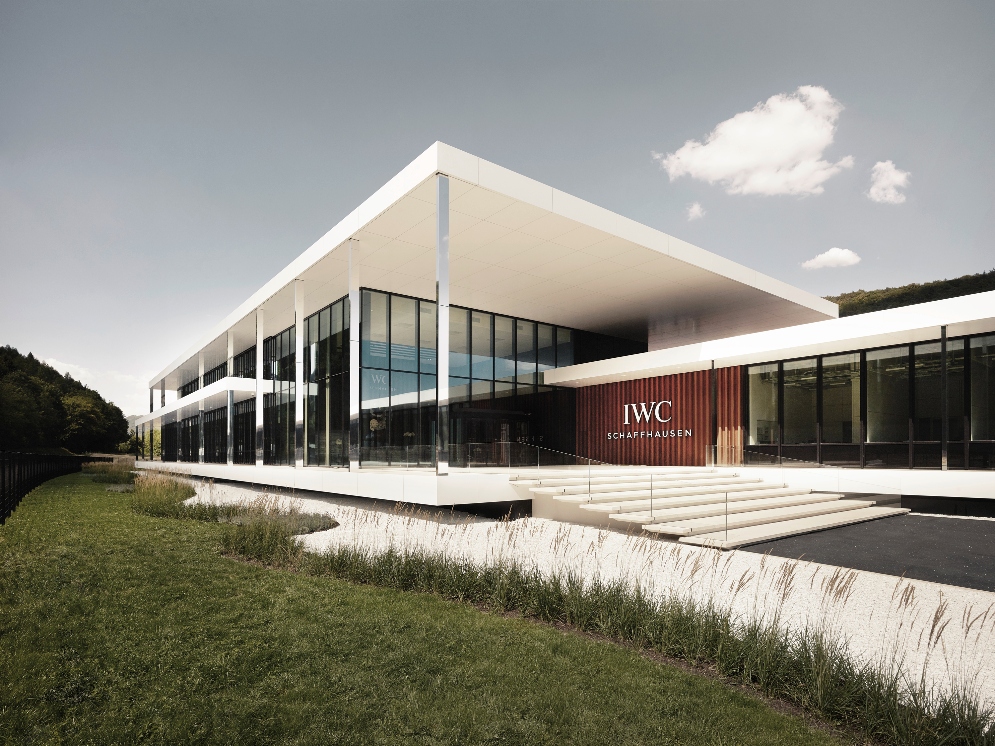
Maximum Punishment
Before we speed into the proper activities here, including two of our favourite parts of any manufacture tour, we will spare a few words for a key takeaway here. Unusually, for this particular tour, we managed to get into the quality control area, where there are all sorts of torture tools designed to inflict maximum punishment on finished watches. This kind of activity happens at most reputable watchmaking firms but one rarely gets to see it. As noted in the Conversation story in the Autumn issue, we loved watching the team here send watches flying into a net, courtesy of a good hard whack from a hammer (the watches are subsequently tested for rate and amplitude variations, which can happen when the balance is disturbed by sudden shocks).
Beyond the perverse pleasure of applying some pain to very expensive objects, the idea in quality control, or more appropriately, quality assurance, is to prove that the watches are tough enough to withstand much more than the hard knocks you will subject them to. IWC watches are nothing if not tough, as we can attest. While not every IWC watch is tested or subjected to the same array of tests, samples of various production batches are. We can report that the smiling technical specialists here are very thorough and are positively pumped about what they do.
Moving back into the order of the tour proper, IWC takes pains to showcase its materials section, where there is that satisfying moment of holding rods of raw material in one’s hands. This is hardly incidental though because there is a slew of bar-turning and milling operations that take place in the manufakturzentrum, which all involve bars. IWC tells us that approximately 1,500 different components are made in the movement-component workshop itself. This reportedly involves all parts for the calibre families 52 and 82 (automatic), 59 (manual-winding with eight days of power reserve) and 69 (automatic chronograph). Also included are movement components for something like the Portugieser Grande Complication, and its case (which is made here, in the basement with all the other IWC cases, although the component count mentioned does not include what goes into cases).
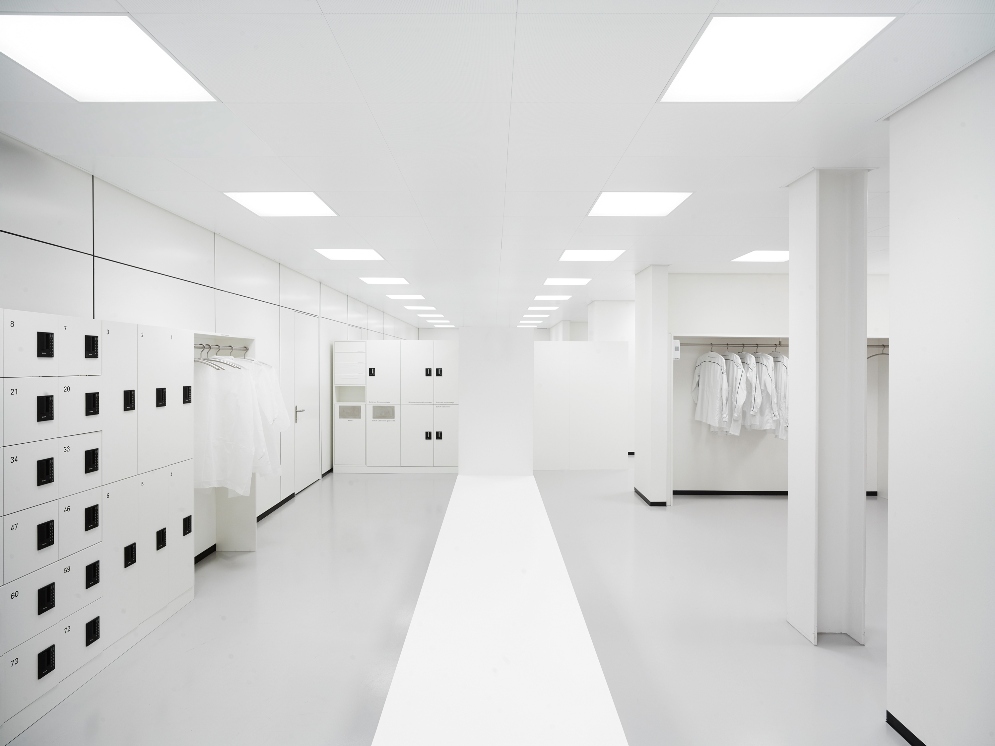
Some Assembly Required
As expected, it is all industrial action for something like the calibre 52 family, where an articulated robot feeds the aforementioned raw materials into a CNC machine that produces completed components. We did not see the production of components for complicated watches, nor the assembly of movements, but that also takes place in the manufakturzentrum. While robots are indeed involved in the making of components, movement assembly is where the watchmakers take over from machine operators. IWC notes that the production lines for each calibre family are entirely in the spirit that founder Jones envisioned back in his day. We dare say that no one in the 19th century could imagine 21st century engineering processes! In terms of cases, though we are not focussing on that here, a single metre-long bar of material can produce between 30 and 50 cases (depending on material and type of case, according to Time and Tide Watches).
Our tour returned to the roots of watchmaking for its final stage, with the disassembly and assembly of a generic pocket watch movement. While this was a staple of manufacture tours once upon a time, the IWC session was the only one we had in all the visits covered in this section. As always, it is an eye-opening experience that lets one come to grips with the delicate and precise craft of assembling tiny machines out of tiny parts. We recommend that all manufactures restore this practice, for the sake of context if nothing else.
For all the calibres produced in-house here, the activity is carried out in clean room settings, and that is true of typical contemporary manufactures. This limits the ability of guests and journalists to get close to the action, hence the importance of the watch assembly activity, in our considered opinion. It should be noted that what manufactures have in terms of clean room atmospheres is not the same as what one encounters in silicon wafer manufacturing, for example, but it is something close.
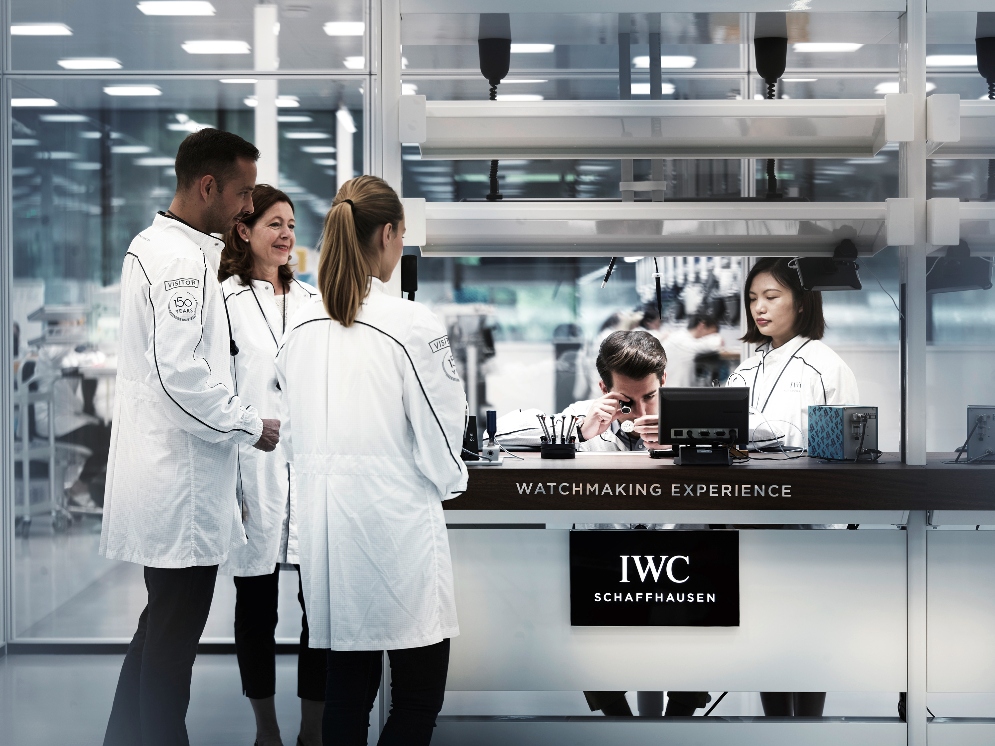
Personal Touch
We reserve our final thoughts for the manufakturzentrum itself, which is a stunning structure that is surely meant to reflect the character of IWC itself. With massive windows, it offers a surfeit of natural light for the movement assembly watchmakers. The entire structure feels a little too big and that is by design because it can accommodate 400 staff (currently, some 230 people work here) so it was literally built for the future. While the manufakturzentrum was designed by Zurich architects ATP, CEO Herr-Granger is an architect by training and also personally participated in the design process.
The manufakturzentrum is also a paragon of sustainable practices too, with solar panels installed on the roof, and water for cooling and heating drawn from groundwater sources. This too is in line with the history of IWC, what with founder FA Jones choosing Schaffhausen partly because of the hydroelectric power offered by the nearby Rhine river.
On that note, it is time to return to Ruckdee’s watch, which had a bit of an issue – residue of oil leftover from servicing, on the hands. Upon taking a look at the watch, an IWC watchmaker simply asked Ruckdee to leave the watch in his hands while we went about our tour, and collect it later. True enough, it was all done with no fuss whatsoever, and we can report the Ruckdee is rather pleased with himself. If nothing else, this serves to illustrate that no matter the technology behind the watches, it is the human element that makes the difference.
This article was first published on WOW’s 2024 Legacy Issue
For more on the latest, click here.








